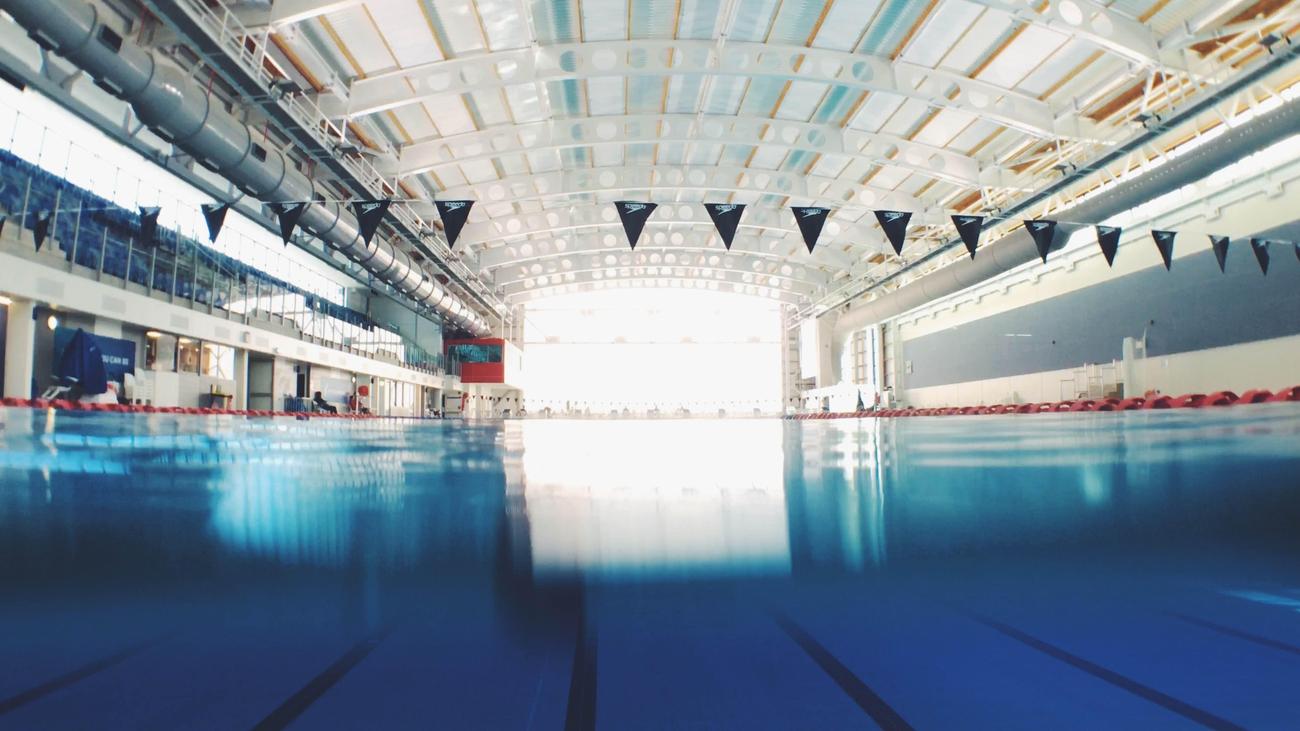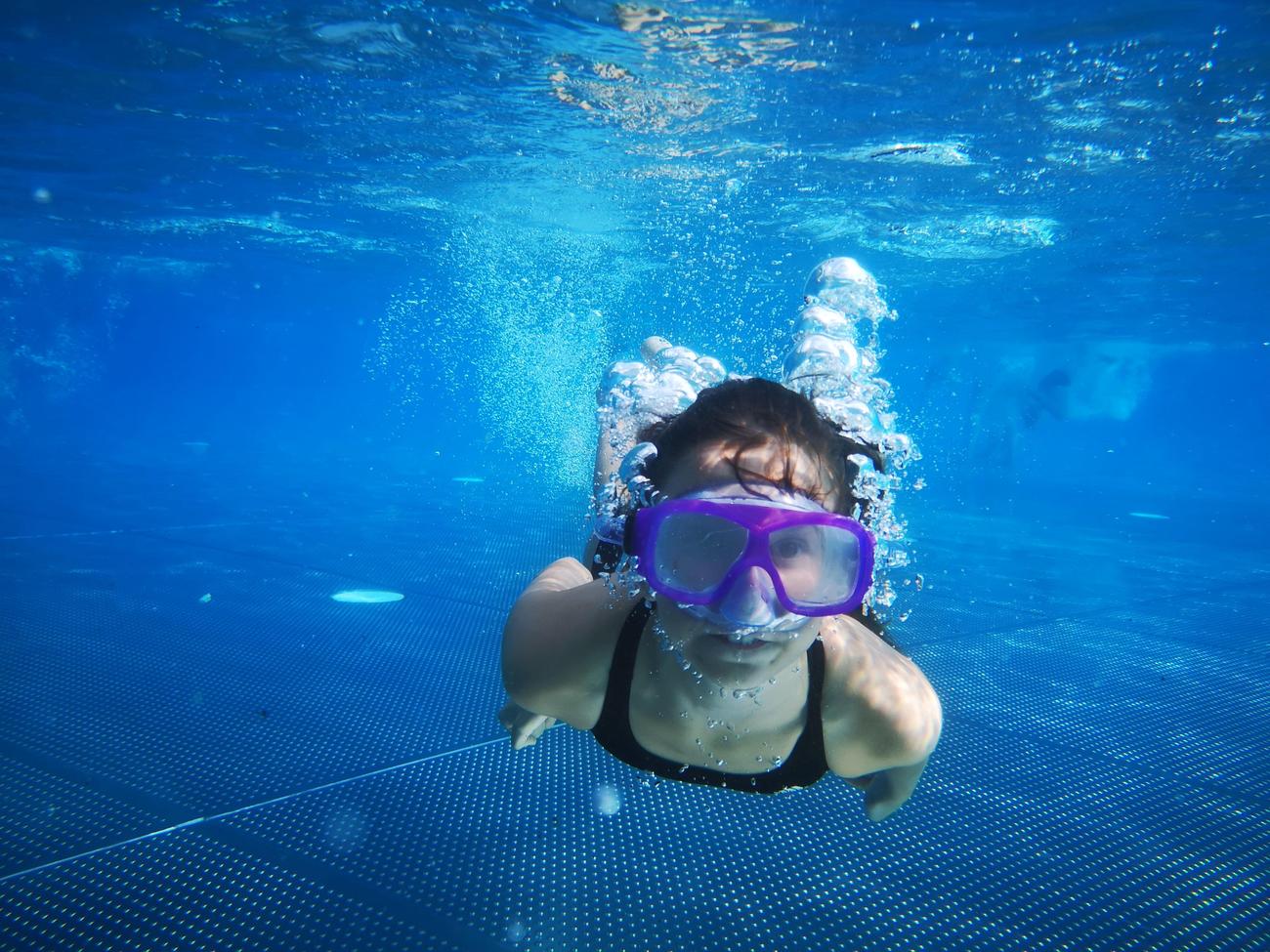Swimming, a graceful and awe-inspiring sport that has captivated audiences for generations, has taken center stage in the prestigious Olympic Games. In this article, we dive into the thrilling waters of Olympic swimming, unraveling a treasure trove of fun facts and untold tales. Join me as we embark on a journey through time, exploring the incredible stories and remarkable achievements that have shaped the sport’s legacy within the Olympic arena. From record-breaking feats to surprising anecdotes, prepare to be immersed in the fascinating world of swimming in the Olympics.

Fun Facts about Swimming in the Olympics
Swimming has always been an integral part of the Olympic Games, captivating audiences with its displays of speed, endurance, and teamwork. As we dive into the depths of Olympic swimming, let’s uncover some fascinating facts that make this sport truly legendary.
1. The Olympic Pool: A Watery Wonder
Did you know that an Olympic pool can hold up to 850,000 gallons of water? That’s nearly 25 times the amount an average person uses in a year! It takes careful maintenance and precise measurements to maintain the perfect conditions for athletes to reach their full potential.
2. The Stamina of a Swimmer
When we watch Olympic swimmers glide effortlessly through the water, it’s easy to overlook the extraordinary amount of effort they put in. Most competitive swimmers swim an incredible 6-12 miles a day! Imagine swimming for hours on end, pushing your body to the limit. It’s a testament to their unwavering dedication and determination.
3. The Trailblazers: Breaking Barriers
The Olympic Games have witnessed numerous trailblazers who shattered both records and expectations. Take Gertrude Ederle, for instance. In 1926, she became the first woman to swim the treacherous English Channel, defying societal norms and inspiring generations of female athletes to follow in her wake.
4. Mark Spitz’s Iconic Triumph
In 1972, a young swimmer by the name of Mark Spitz made Olympic history by winning an astounding 7 gold medals in a single Games. From his iconic mustache to his unbeatable speed, Spitz left an indelible mark on the sport and established a record that still stands today. His achievements serve as a reminder that greatness can be achieved through hard work and unwavering focus.
5. The Road to the Olympics: A Challenging Journey
Not everyone can make it to the Olympic swimming trials, let alone the prestigious national team. Each year, around 2,000 hopefuls participate in the US swimming trials, vying for just a few coveted spots. Only 50 swimmers ultimately secure a place on the team, making it a fierce battle of talent and perseverance. This staggering statistic highlights the immense level of competition in the swimming world.
6. Women’s Rise to Prominence
Although women’s events were introduced to the Olympic Games in 1912, it took time for the world to acknowledge the brilliance and strength of female swimmers. Over the years, women like Gertrude Ederle and countless others have showcased their prowess, shattering stereotypes and fueling the growth of women’s swimming on a global scale. Their achievements have propelled equality and opportunity within the sport.
7. Marathon Swimming: The Ultimate Test of Endurance
While all swimming events require immense stamina, marathon swimming stands out for its long distances. Competitors face grueling challenges, conquering courses that span 10 kilometers or more. This demanding discipline tests their mental and physical fortitude, pushing the boundaries of what the human body can achieve. It’s an awe-inspiring showcase of resilience and determination.
In the Olympic swimming arena, tales of triumph, dedication, and resilience unfold with each stroke. These captivating fun facts provide us with a glimpse into the rich history and extraordinary achievements of swimmers who have graced the Olympic stage. By celebrating their journey, we not only appreciate the sport’s allure but also inspire future generations to dive headfirst into their own dreams.
“From the mind-boggling size of an Olympic pool to the staggering distances swimmers cover, the world of Olympic swimming is filled with jaw-dropping fun facts that leave us amazed and in awe.”
Swimming is not only a great way to stay fit, but it also has some fascinating facts that you might not know about. Did you know that swimming is one of the most efficient forms of exercise? It works out multiple muscle groups simultaneously, making it a total body workout. If you’re curious to learn more fun facts about swimming, click here: fun facts about swimming. You’ll be amazed at the incredible benefits and interesting trivia surrounding this popular water sport. So, dive in and discover the incredible world of swimming!
Fun facts about swimming in the Olympics will leave you amazed and eager to learn more! Did you know that swimming is one of the most-watched and beloved sports in the Olympic Games? Dive into the world of swimming with these fascinating tidbits. From swimming records being broken to surprising outcomes, the Olympics have seen it all. Discover the incredible swimming facts in Olympics, like the hardships faced by athletes to achieve greatness. For more interesting insights, check out our collection of swimming facts in Olympics. If you’re craving lesser-known information about swimming in the Olympics, we’ve got you covered. Explore our compilation of lesser-known swimming facts in Olympics. And for those seeking the most intriguing details, we present our selection of interesting swimming facts in Olympics. Get ready to be inspired and amazed by the world of swimming in the Olympics!
24 Fascinating Swimming Facts
[youtube v=”XRL_XQuWy4Y”]
Breaststroke: From the Oldest to the Slowest Stroke
The breaststroke, the oldest swimming stroke known to mankind, is also the slowest stroke swum at the Olympics. Despite its leisurely pace, this stroke requires immense skill and technique to execute perfectly. “The breaststroke is not just the oldest, but also the slowest stroke swum at the Olympics,” according to Simply Swim.
Shoulder Pain: A Common Challenge for Swimmers
It may surprise you to learn that over half of the world’s top swimming athletes suffer from shoulder pain. The repetitive motion and intense training can take a toll on their shoulders, requiring dedication and resilience to overcome. As Simply Swim puts it, “Shoulder pain is a common challenge faced by many swimming athletes, showcasing the physical demands of the sport.”
The Bikini’s Unconventional Naming
The famous bikini swimsuit got its name from Bikini Atoll, a nuclear test site in the South Pacific. This seemingly unrelated connection has left its mark on popular culture, showcasing the creativity and inspiration behind the fashion industry.
Elephants: Surprising Swimmers
Elephants, known for their massive size, are actually proficient swimmers. They can swim up to 20 miles a day, using their trunks to break through any obstacles in their path. This unexpected talent showcases the diverse abilities of these gentle giants.
Centuries of Swimming Tradition
Swimming has a rich history that spans thousands of years. Drawings and paintings dating back to 2,500 AD provide evidence of humans engaging in swimming activities. This tradition dates back at least 10,000 years, highlighting the timeless appeal and importance of swimming as a recreational and competitive activity.
Inclusion of Women in the Olympics
While the Olympics initially started as a men’s only competition, women were finally allowed to compete in 1912. This groundbreaking moment opened doors for female athletes worldwide, breaking down gender barriers and fueling the growth of women’s swimming events.
Titanic: A Ship with a Swimming Pool
Contrary to popular belief, the Titanic, famously known for its tragic sinking, had a swimming pool on board. This luxury feature was a testament to the opulence and grandeur of the ship. Simply Swim states, “The Titanic boasted the first cruise ship swimming pool, offering passengers a unique leisure experience during their voyage.”
Matthew Webb: The First Channel Swimmer
In 1875, Captain Matthew Webb became the first person to successfully swim across the English Channel. This remarkable feat demonstrated the human spirit of determination and endurance, paving the way for future record-breaking swimmers.
Gertrude Ederle: Shattering Stereotypes
In 1926, Gertrude Ederle became the first woman to swim across the English Channel. Her achievement shattered societal norms and inspired generations of female athletes. Simply Swim highlights, “Gertrude Ederle not only conquered the English Channel, but she did it faster than the quickest man.”
Swimming Makes a Splash in the Olympics
Swimming became an official Olympic event in 1896, cementing its status as a globally recognized sport. Athletes from around the world compete in swimming events, showcasing their skills and striving for excellence. As Simply Swim states, “Swimming’s inclusion in the Olympics further solidifies its position as a competitive and esteemed sport.”
The Origins of the Tumble Turn
The tumble turn, a technique used by swimmers to quickly change direction at the pool wall, was invented by American swimming coach Tex Armstrong. He trained Adolph Kiefer, a renowned swimmer who competed in the 1936 Olympic Games. This innovative technique revolutionized competitive swimming, allowing swimmers to gain an edge in races.
Full-Body Workout: Swimming Works it All
Swimming engages all of the body’s main muscles, making it a highly effective full-body workout. From the arms and legs to the core and back, each stroke and kick contributes to overall muscle conditioning. “Swimming is a fantastic way to work out all of your body’s main muscles,” according to Simply Swim.
Diving Into History
In 1893, the first diving board appeared in England at Highgate Ponds. This addition to swimming facilities allowed divers to practice their skills and added an adrenaline-filled element to the sport. Simply Swim notes, “The introduction of the diving board provided a thrilling aspect to swimming activities, captivating divers and spectators alike.”
Swimming: A Lifesaving Skill
It may come as a surprise, but there are still over 64 million people in the USA who do not know how to swim. This alarming statistic emphasizes the importance of swimming lessons and water safety education initiatives. Simply Swim reminds us, “Learning to swim is not only enjoyable but can also be a lifesaving skill.”
Micro Creatures Behind Your Lips
Did you know that more than 1 million micro creatures swim, feed, and reproduce behind your lips? This intriguing fact highlights the hidden world of microscopic organisms that coexist with us in our daily lives. Simply Swim suggests, “The human body never ceases to amaze with its intricate and fascinating details.”
Benjamin Franklin’s Contribution to Swimming
Benjamin Franklin, the renowned inventor and statesman, invented swimming fins. His innovative creation helped swimmers maneuver through the water with greater speed and efficiency. This contribution showcases Franklin’s ingenuity and his impact on various aspects of everyday life.
Kangaroos: Surprisingly Agile Swimmers
Kangaroos, known for their hopping abilities, are also excellent swimmers. Their powerful legs propel them through the water, enabling them to navigate various aquatic environments. This unexpected talent highlights the adaptability and versatility of these unique creatures.
The Rise of Synchronized Swimming
Synchronized swimming, a visually captivating sport that combines swimming, dance, and gymnastics, was not featured in the Olympics until 1984. Its inclusion showcased the artistic side of swimming and provided a platform for athletes to express themselves through synchronized movements in water. “Synchronized swimming adds an artistic flair to the world of swimming,” according to Simply Swim.
The Ancient Origin of Competitive Swimming
The first recorded human race took place in Japan during the 1300s. This historical event marked the emergence of competitive swimming as a form of athletic competition. Simply Swim notes, “The roots of competitive swimming can be traced back to ancient times when swimmers raced against each other to prove their skills.”
The Evolution of Swimming Goggles
The first swimming goggles were made from tortoise shells. These early goggles offered swimmers essential eye protection during their aquatic adventures. In the 1930s, the first rubber goggles were introduced, combining comfort and functionality. Simply Swim adds, “Swimming goggles have come a long way in terms of design and functionality, providing swimmers with improved vision and eye safety.”
From Fish Ponds to Swimming Pools
The word “swimming pool” finds its origins in the French term “piscine,” which means fish pond. This linguistic connection reflects the historical use of water bodies as swimming areas and highlights the transformation of natural swimming spots into purpose-built pools. Simply Swim points out, “‘Piscine,’ the French word for swimming pool, carries with it the connotation of its fish pond origins.”
Front Crawl: An Age-Old Favorite
The front crawl, also known as freestyle, is the most popular swimming stroke. Its efficiency and speed make it a favorite choice among swimmers of all levels. From recreational swimmers to Olympic athletes, the front crawl showcases the beauty and effectiveness of this stroke.
Olympic Pools: Vast Volumes of Water
An Olympic-sized swimming pool can hold up to 850,000 gallons of water, which is nearly 25 times the amount an average person uses in a year. This staggering volume of water required to fill an Olympic pool reflects the grandeur and scale of the sport. Simply Swim highlights, “Olympic-sized pools are a testament to the magnitude of swimming events, requiring vast amounts of water.”
The Limitless Expanse of the Sea
Covering approximately 71% of the Earth’s surface, the oceanic waters amount to a staggering 328 million cubic miles, which covers about 71% of the Earth’s surface. This awe-inspiring fact emphasizes the vastness and power of the world’s oceans. “The Earth’s oceans hold an unfathomable volume of water, comprising a significant portion of our planet’s surface,” according to Simply Swim.
Incorporate tables in markdown format
| Fact | Description |
| — | — |
| Breaststroke | Oldest and slowest stroke swum at the Olympics |
| Shoulder Pain | Over half of the world’s top swimming athletes experience it |
| The Bikini | Named after Bikini Atoll, a nuclear test site |
| Elephants | Can swim up to 20 miles a day |
| Centuries of Swimming | Evidence of human swimming activities dating back to 2,500 AD |
| Inclusion of Women | Women started competing in the Olympics in 1912 |
| Titanic’s Pool | The Titanic had a swimming pool onboard |
| Matthew Webb | First person to swim across the English Channel |
| Gertrude Ederle | First woman to swim across the English Channel |
| Swimming in the Olympics | Became an Olympic event in 1896 |
| Origins of the Tumble Turn | Invented by American swimming coach Tex Armstrong |
| Swimming’s Full-Body Workout | Engages all of the body’s main muscles |
| First Diving Board | Installed at Highgate Ponds in 1893 |
| Lack of Swimming Skills | Over 64 million people in the USA can’t swim |
| Micro Creatures Behind Your Lips | Over 1 million micro creatures live there |
| Benjamin Franklin’s Fins | Invented swimming fins |
| Kangaroos’ Swimming Skills | They are excellent swimmers |
| Synchronized Swimming | Added to the Olympics in 1984 |
| Ancient Swim Races | The first recorded human race was in Japan in the 1300s |
| Evolution of Goggles | First made from tortoise shells, then rubber goggles were introduced |
| French Origins of “Swimming Pool” | The French term “piscine” means fish pond |
| Front Crawl | The most popular swimming stroke |
| Olympic Pool Volumes | Can hold up to 850,000 gallons of water |
| Expanse of the Sea | The Earth is covered by 328 million cubic miles of sea water |
FAQ
Q: How much do competitive swimmers swim in a day?
A: Most competitive swimmers swim 6-12 miles a day.
Q: How much water can an Olympic pool hold?
A: An Olympic pool can hold up to 850,000 gallons of water.
Q: Who was the first woman to swim the English Channel?
A: Gertrude Ederle was the first woman to swim the English Channel, in 1926.
Q: How many gold medals did Mark Spitz win at the 1972 Olympic Games?
A: Mark Spitz won 7 gold medals at the 1972 Olympic Games, setting a record.
Q: How many people make it to the US swimming trials and the final Olympic team?
A: Only 2,000 people make it to US swimming trials, and only 50 of those make it to the team.
Q: When were women’s swimming events introduced in the Olympic Games?
A: Women’s events were introduced in the Olympic Games in 1912.
Q: What makes marathon swimming stand out in the Olympics?
A: Marathon swimming stands out due to the long distances that need to be covered.
- China II Review: Delicious Food & Speedy Service - April 17, 2025
- Understand Virginia’s Flag: History & Debate - April 17, 2025
- Explore Long Island’s Map: Unique Regions & Insights - April 17, 2025
















